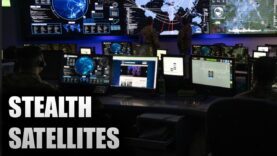The True Extent of US Spy Satellite Capability
The True Extent of US Spy Satellite Capability
Video Summary
One of the most interesting aspects of the US satellite program is its use of reconnaissance satellites, or “sigint.” These satellites are designed to detect and track signals, and they’re used for a variety of purposes, from detecting missile launches to monitoring internet traffic. The most advanced of these satellites, such as the Trumpet and Mentor, are capable of detecting signals from cell phones, radios, and even fiber optic cables.
The US has also been working on a new generation of stealth satellites, which are designed to be more difficult to detect and track. These satellites use advanced materials and design techniques to absorb radar waves and reduce their visibility. The first of these stealth satellites, called Misty, was launched in 1990, and it was met with skepticism by the media, which reported that it had failed and burned up in the atmosphere. However, it’s likely that Misty was actually a success, given the efforts to keep it quiet.
Another interesting aspect of the US satellite program is its use of very low earth orbit (VLEO) satellites. These satellites are designed to operate at extremely low altitudes, which allows them to take advantage of the Earth’s atmosphere to improve their resolution and communications capabilities. The company Redwire is developing a new line of VLEO satellites, which uses advanced aerodynamics and electronic propulsion to stay in orbit for longer periods of time.
Overall, the US has a remarkable capacity for space-based intelligence gathering, and its satellites play a critical role in a number of areas, from military surveillance to commercial satellite imaging. As China continues to catch up, it will be interesting to see how the US adapts and maintains its lead in this area.
























